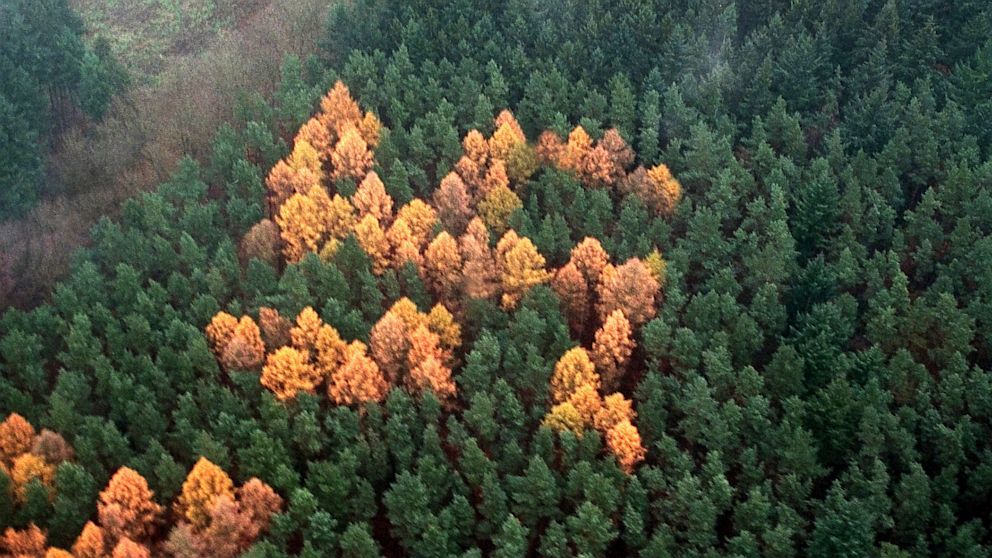Horticultural Hate: The Mystery of the Forest Swastikas
Blame it on the larches.

July 7, 2013— -- Over 20 years ago, a landscaper in eastern Germany discovered a formation of trees in a forest in the shape of a swastika. Since then, a number of other forest swastikas have been found in Germany and beyond, but the mystery of their origins persist.
Blame it on the larches. Brandenburg native Günter Reschke was the first one to notice their unique formation, according to a 2002 article in the Süddeutsche Zeitung newspaper. To be more precise, however, it was the new intern at Reschke's landscaping company, Ökoland Dederow, who discovered the trees in 1992 as he was completing a typically thankless intern task: searching aerial photographs for irrigation lines.
Instead, he found a small group of 140 larches standing in the middle of dense forest, surrounded by hundreds of other trees. But there was a crucial difference: all the others were pine trees. The larches, unlike the pines, changed color in the fall, first to yellow, then brown. And when they were seen from a certain height, it wasn't difficult to recognize the pattern they formed. It was quite striking, in fact.
As he was dutifully accomplishing the task he had been given, the intern suddenly stopped and stared, dumbfounded, at the picture in his hand. It was an aerial view of Kutzerower Heath at Zernikow -- photo number 106/88. He showed it to Reschke: "Do you see what this is?" But the 60-by-60 meter (200-by-200 foot) design that stood out sharply from the forest was obvious to all: a swastika.
Reschke is actually a fan of his native Uckermark region of northeastern Germany, extolling its gently rolling hills, lakes and woods, as the "Tuscany of the north." But what the two men discovered in 1992 in that aerial photograph thrust this natural idyll into the center of a scandal.
A Swastika as a Birthday Gift?
Reschke chartered a plane to fly over the area, and indeed, a neatly delineated swastika was clearly visible. The local forester, Klaus Göricke, set out to uncover the origin of the troubling larch formation, and he found out that the trees had been there for a long time. By measuring the trees, he came to the conclusion they had been planted in the late 1930s. That means that for decades, during every spring and autumn, a massive swastika took shape in the Kutzerower Heath -- surviving the Russian occupation, Communist rule in East Germany and the fall of the Berlin Wall without ever attracting notice.
The fact that it went undiscovered for so long was in part due to the short period of time each year that it was visible. Furthermore, it could only be seen from a certain altitude, and the airplanes that headed north out of Berlin were already much too high for passengers to see the swastika in the forest. Private planes, on the other hand, were forbidden in East Germany.
It didn't take long for rumors to spread about how the swastika got there in the first place. A local farmer claimed that he had planted the trees as a child, with a forester paying him a few cents for each seedling he put in the ground. Others reported that it was put there as a sign of loyalty after a nearby villager had been taken to the Sachsenhausen concentration camp by the Nazis because he had secretly been listening to the BBC. Still another version holds that a local Nazi leader ordered the trees planted on the occasion of Hitler's birthday. Finally, the Berliner Zeitung newspaper reported that it was planted in gratitude to the Reich Labor Service for building a street in Zernikow.




